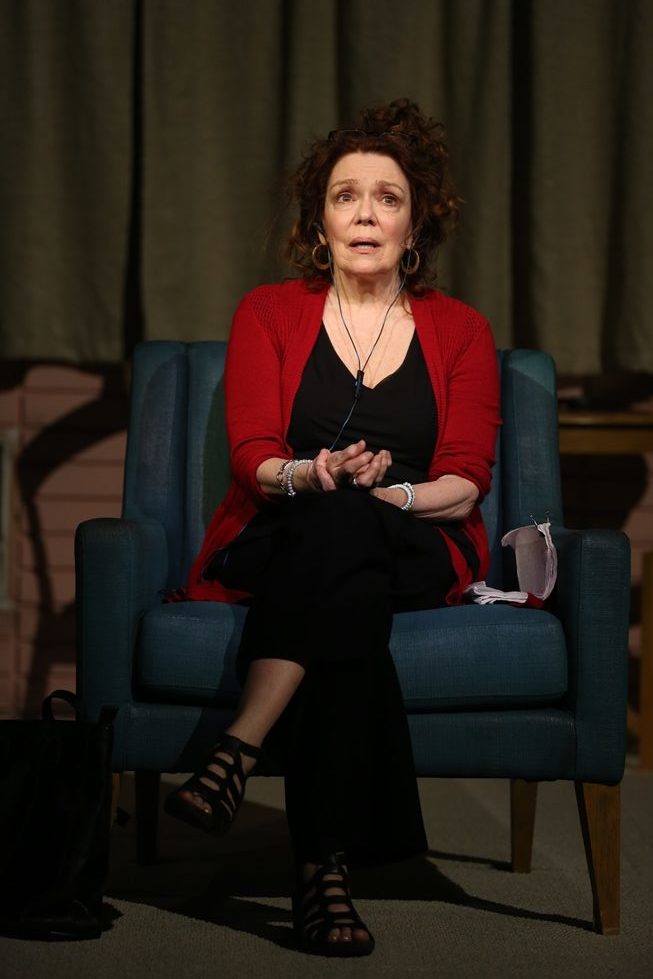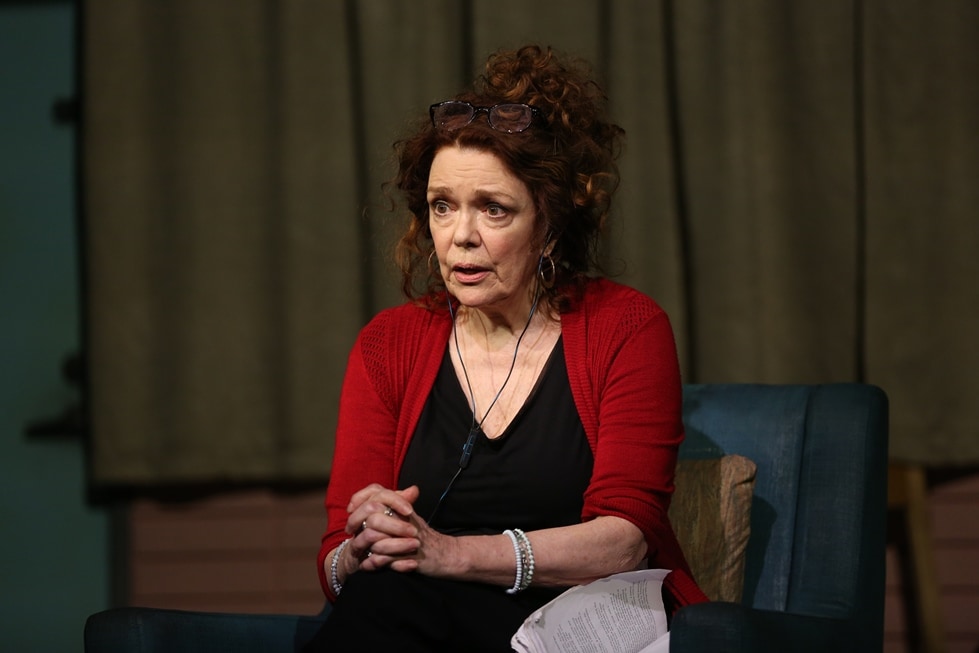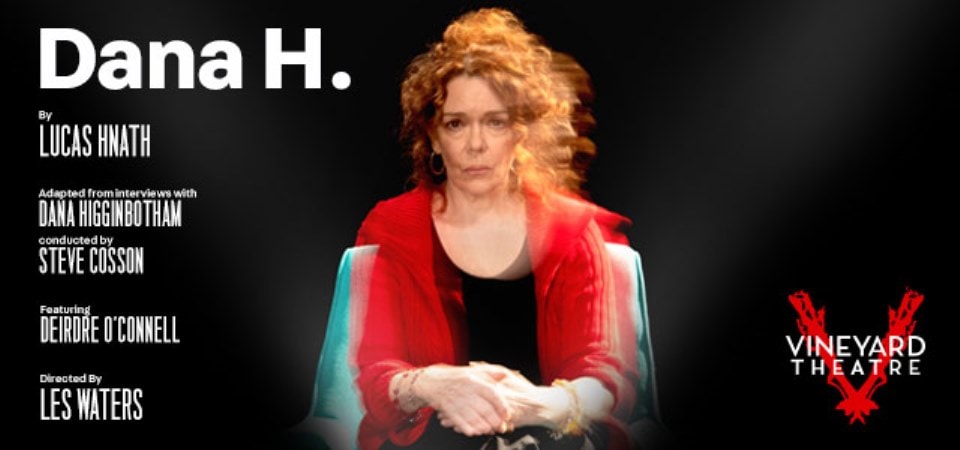Award-winning playwright Lucas Hnath takes a provocative and personal approach to an acutely disturbing crime story and its aftermath in his latest work Dana H., making its New York debut at Vineyard Theatre following acclaimed co-productions in Chicago (Goodman Theatre) and Los Angeles (Center Theatre Group). Adapted and edited for the stage from recorded interviews with his real-life mother Dana Higginbotham (which Hnath enlisted his friend and colleague Steve Cosson to conduct with her), the docudrama memory play recounts, in her own voice, her 1997 abduction and abuse by a man named Jim, a dangerous suicidal ex-convict and member of the Aryan Brotherhood, whom she met while working as a chaplain in a prison psych ward in Florida.

In a continuous series of three segments introduced by supertitles, Dana, represented on stage by the phenomenal Deirdre O’Connell, recalls the events leading up to her kidnapping, the brutal five-month captivity and crime spree she endured, and the subsequent years of dealing with the trauma and returning to a life and career (now as a hospice counselor, guiding patients through the process of dying). Through her sometimes disoriented, sometimes dissociated, sometimes anxiety-ridden, and always unsettling recollections, she also presents a very real and compelling psychological study in the manifestation of PTSD, the victim mentality, and the Stockholm Syndrome.
Directed by Les Waters, O’Connell – dressed in attractive everyday clothing (costume design by Janice Pytel) and seated on a chair before the backdrop of a generic seedy motel room of the type in which Higginbotham was repeatedly held (set by Andrew Boyce) – flawlessly lip syncs to voiceover recordings of the actual interviews (illusion and lip-sync consultant Steve Cuiffo), bringing her words to life and capturing her emotions and psychology with a readily legible range of fully empathetic facial expressions, gestures, and body language, and an increasingly haunted look in her eyes. Every stammer, pause, uncomfortable laugh, and clearing of her throat is timed to perfection, rendering each response and reaction to the questions of Cosson (who is heard but not seen) a revelation.
At times she refers to the manuscript in which she wrote down her memories, to remind her of the specific incidents and chronology, or pulls knives and items with swastikas out of her bag, which she oddly kept as souvenirs of her ordeal. At one point we see her standing by the motel window as if watching a replay in her agitated mind, as the lights flash wildly on and off (lighting design by Paul Toben, who also created the superscriptions) and the sound (by Mikhail Fiksel) heightens to an overwhelming cacophony (in contrast with an adjacent scene of daily life going on calmly and surely as the sun shines brightly).

As riveting as Dana’s harrowing recollections are, they raise as many questions as they answer in what was left unsaid. Did no one among her family, friends, or colleagues ever wonder what happened to her or report her missing? How was an unnamed man assigned to watch her able to get her out of a crowded motel and convince Jim that he didn’t know where she was? Why would her violent captor stop looking for her after only three days, when he had connections everywhere and was feared throughout the community? How did his family, who raised him to be a criminal from the age of three, find her and why would they reach out to her with an apology and an update on his health? After she made her escape and survived, did she make no effort to contact anyone she knew or to report the crime, even though she carried the evidence she had saved with her years later to the interview and showed it to Cosson? Did any of this really happen as she described it, or was it all in Dana’s distraught mind, or a tale she concocted to cover up her own unexplained departure, or to heighten awareness of the conditions she observed in the patients she counseled? And most significantly, do any of the inconsistencies we perceive in her story (and in her son’s redacted version) constitute yet another deplorable case of victim blaming that is so prevalent in our culture and so frequently directed against women (even by the police, who are supposed to be there to protect us)?
Hnath raises many important issues in Dana H. that leave us wondering, thinking, and shaken, and O’Connell delivers them with gripping intensity in a silent but consummately eloquent and insightful tour-de-force performance with resounding social and psychological overtones.
Running Time: Approximately 75 minutes, without intermission.
Dana H. plays through Saturday, April 11, 2020, at the Vineyard Theatre – 108 East 15th Street, NYC. For tickets, call (212) 353-0303, or purchase them online





